We are excited to present a two-part interview with acclaimed violinist and editor Jorja Fleezanis, conducted by Ovation Press co-founder Hans Jensen. Ms. Fleezanis was concertmaster of the Minnesota Orchestra from 1989 to 2009—the longest-tenured concertmaster in the orchestra’s history and only the second woman in the U.S. to hold the title of concertmaster in a major orchestra when appointed. Prior to that, she was the associate concertmaster with the San Francisco Symphony for eight years. Today she is on the faculty of the Jacobs School of Music at Indiana University. Ms. Fleezanis has edited four orchestral parts for violin.
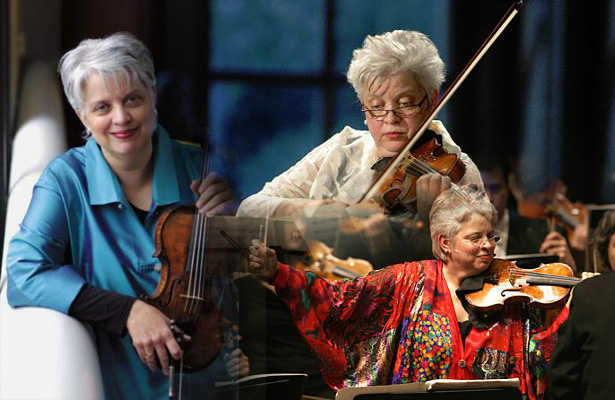
Ovation Press: We are delighted to have your expertise and knowledge as an editor at Ovation Press. You have such a top-notch, professional resume–it covers all aspects of orchestral playing: from section player in Chicago, to associate concertmaster in the San Francisco Symphony for 8 years, to your great 20-year stay as concertmaster of the Minneapolis Symphony Orchestra. Your teaching credentials are also very impressive. The Jacobs School of Music at Indiana University is lucky to have you on their faculty! I have so many questions that I am eager to ask you.
You started your full-time teaching job at the Jacobs School four years ago. Do you miss playing in orchestras in general?
Jorja Fleezanis: As I was planning this next chapter of my professional career I spent many an hour in rehearsals and concerts with the Minnesota Orchestra imagining myself not doing that anymore. This exercise first and foremost allowed me to take stock and appreciate the results of my twenty years of musical life on that stage and with that orchestra. It also allowed me to begin privately saying my goodbyes while installing a visualization of the work I knew I would be doing at the Jacobs School in starting an orchestral training program, a dream that was long in the making to happen someday, somewhere. One of the most important parts of my orchestral training mission is to sit in the orchestra rehearsals: rotating between the five orchestras; trouble shooting from the inside; assisting conductors in matters of getting a better bowing to solve a phrasing or articulation issue; suggesting fingerings, bow color, rhythmic control! Because of this activity I still keep my contact with the orchestra and the repertoire I still adore. When I have been asked to sit in as a guest concertmaster for professional orchestras I have jumped to say yes simply because I have the skill set in place, often know the conductors and am happy to be of help when the reason for being there is due to a search for a new concertmaster.
Ovation Press: Your teaching career has been long and wide-ranging–are there any issues with students or teaching today that surprise you? Are there aspects of violin-playing or music in general that you find yourself needing to spend more time on than you would expect?
Jorja Fleezanis: There are two areas that are high on my radar and that are essential core items: strong, vibrant rhythmic skills, and knowledge of the score and what it contains that inform us of the composers intentions. I am not surprised that these two areas are weak in students, but without these in place I feel that their musical boat is quite lost, and they play in a self-indulgent manner. The one other gap that is both a technical and musical one is an appreciation for the interval, any interval, and how it holds so much expressivity in the way melodic lines are made. A minor sixth going upwards can be yearning or urgently reaching for the climactic moment, or possibly it is there to relax the end of a phrase, all depending on the context of the text. If you don’t see the intervals as holding these possibilities you are more likely to be a mono toned player. I would add that intervals are the basis for the geography of any phrase.
Ovation Press: As string teachers we spend a lot of time teaching fundamentals to our students to equip them with the necessary tools needed for their profession. What are some specific skills sets that you want your students to have, and how do you go about teaching them?
Jorja Fleezanis: Scales, arpeggios, thirds, fourths, fifths, sixths, octaves, tenths – all are extremely important to learning the fingerboard, building finger strength and training the ear. I was trained to hold the fourth finger down during string crossings in scales, specifically to develop a smooth legato. Legato playing has many enemies, string crossings is one of them. I will also assign etudes to reinforce problem areas as needed and to build bowing skills and left hand facility. Any repertoire I assign has the makings for many minutes and hours of building technique that draw on specific technical nuts and bolts. My preference is to mold the technical work between the rudiments of scale work and digging deeper into the soil of the repertoire to create exercises using the music as the raw material. I recently heard that Martha Argerich, the eccentric and ferociously compelling pianist, loathed doing scales etc, and instead used the raw material of the music she was learning to perfect her command of the instrument. I like that approach and have peppered my personal work with a balance of pure technical work and the using the raw musical material I am preparing to keep me in shape.
Ovation Press: Do your teaching responsibilities at IU include teaching an orchestral repertoire class?
I also discuss etiquette in orchestra, how to sit, how to write in the parts, defining the many foreign words used to describe character that are essential to being a competent musician, to listening to recordings and discussing issues of style and tempi and how they relate. I love these classes because they allow this part of the school community to bond right off the bat. Once they are in the orchestra with lots of advanced peers all around them they feel that much more ahead of the game. I also teach an advanced rep class as does my colleague Ales Kerr.
Ovation Press: When you are teaching orchestral repertoire, how do you plan it out? What is your plan for covering all the major excerpts or works needed to be ready for orchestral auditions? Do you have a one-year, two-year, or longer plan for covering all those works?
Jorja Fleezanis: My advanced rep class is offered each semester and students who are serious about preparing for auditions understand the advantage of having two veteran concertmasters, Alex Kerr and myself, available to learn the ins and outs of orchestral audition material. Many will alternate in taking both of our classes and or each one multiple times. With possible repeaters I will select different repertoire for each semester, and build a new menu that incorporates the main stylistic excerpt groups: classical, romantic and the rest that follow.
Ovation Press: Your experience of having played these works with so many different conductors must give you such a vast amount of knowledge that you can share with students.
Jorja Fleezanis: The wisdoms acquired from various conductors along the way have certainly shaped what I know about orchestral music in the thirty years I was a professional orchestral player. There is too much material really, but I will address the conductors that illuminated my understanding of the classical style. Some of them are performance practice conscious – like Roger Norrington, John Nelson, Ton Koppman – and others, such as James Levine and Osmo Vanska, are interested in text and character as the jump off points. From the first group I learned the element of dance, movement and the elegance this reveals inside the musical lines of Mozart, Haydn and Beethoven. From the other two I mentioned I learned how tempo affects character and how character lights up the theater or dramatic content of the classical language. Learning several Mozart operas and Fidelio with Mr. Levine, while still in school, my eyes were opened to what singers teach us about breath and line in classical style. In other words, what does it mean when we see ‘cantabile’, how do singers use text to articulate short notes and how do they bring pathos or innocence to a slow melodic line, such as Pamina’s aria in the Magic Flute, Ach, ich fuhl. If I look at the vocal line of this aria, how Mozart shapes the words to music, you can draw many conclusions on how to carry this expressive ‘vocal execution’ into an abstract, non text driven musical line in any slow movement of a symphony, concerto or sonata by Mozart. Mr. Vanska, on the other hand, used the text in Beethoven’s scores to consider tempo and character by both weighing the metronome marks and not following customary tempi and traditional interpretations. The debate on the verity of these metronome marks to the aside, I too believe that they help give us a mile marker in an otherwise endless range of choices. Our recordings of the ten Beethoven Symphonies exhibit a level of ensemble that is disciplined in part by sticking religiously to a character led by tempo and strict adherence to articulation and shaping of the lines that is not sentimental.
Ovation Press: Can you share with us some helpful concepts or tips for people taking orchestra auditions? What is really important to do? What are the most common “don’ts” you see at auditions (and how can an auditioning player avoid them)?
Jorja Fleezanis: Get scores to all the excerpts, listen to a number of recordings with the score in hand to see how your line sits inside the context of the whole. Hear the entire passage as you learn excerpts that are new to you and that you have never performed. Work with a metronome to teach you where your weak rhythmic spots are. Dotted rhythms are famously weak in many players, like the ones in the opening theme of the Mozart Symphony 39 second movement Andante. The skill of subdivision cannot be underscored enough in my book. In the early stages of learning this excerpt you should be able to feel every 16th note in the opening theme so it is clearly present in your awareness for the passage that begins after the first double bar and the violas are playing a whole series of them while you enter every other bar. Nothing gives away a player’s lack of pulse than this simple matter of feeling the subdivision that rules such a movement. Take dynamics seriously. Do not just turn the decibel dial up and down, void of energy in softer dynamics, like the pianissimos in Mendelssohn’s Scherzo to the Midsummer Night’s Dream, or disregarding what Brahms means in the Second Symphony, first movement excerpt after letter E when he writes in bar 137 poco forte, and don’t play on in the same fortissimo you ended with in bar 134. Do not think that playing mechanistically exact is enough. You are a musician making music happen, not only auditioning for a car assembly job. Play the excerpts for people often to feel the adrenaline that will be present when you play for a committee. Ask for comments, if only to confirm what you already heard, or be told something you possibly did not hear. Toughen your grip on maintaining a consistent tempo through any given passage of music. Have a clear idea of what the tempo and dramatic language of the passage is WAY before you put the bow to the string. Lastly, love the work.
Jorja Fleezanis: Most of what I add to any bowed part deals with matters of unifying a section’s execution of a passage.
For instance, specifics on how to articulate a passage that from experience I know is ambiguous, either because there is nothing in the part to suggest spiccato or on the string, or when moments when it is necessary to retake the bow to get the right character or weight on a pulse because of how the bow distribution works out. In some cases a word like sostenuto over a long melodic line is meant to underscore the strength of support I believe the passage warrants, as it all to easy to drop the line at the bow changes. For younger inexperienced professional players I prefer to put in such indications in hopes that they pick up on my cue of what will help to make the musical moment clearer and expressively unified. I am a fan of commas to indicate specifically how to release the end of note or to get off a suspension in time to grab the next note with clarity as a whole section. Most of what I write is based on my values in bringing about a high level of ensemble execution. The operative word here is clarity.
In the second part of our interview, Ms. Fleezanis will discuss her thoughts on the changing landscape of classical music and symphony orchestras. In addition, we will take a close look at her recently published edition of Richard Strauss’ Don Juan.




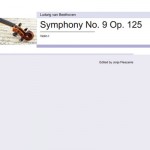
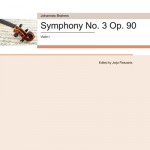




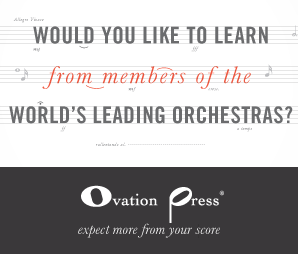

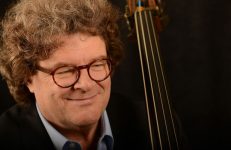



Sunday, May 8.2016: I just returned from the Inaugural Commission Concert of the Michael Steinberg and Jorja Fleezanis Fund. It was a once in lifetime event. Truly glorious! I liked your interview with Jorja. It has added to my delight and soul satisfying day. I appreciate the conversation very much. Thank you, Dori Macek